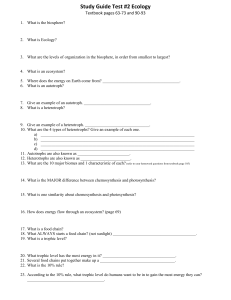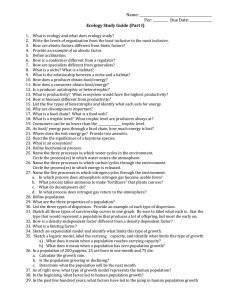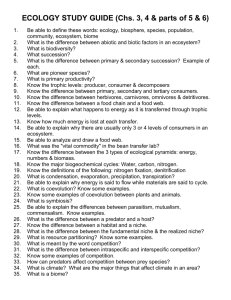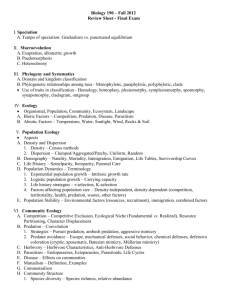STUDY GUIDE EVOLUTION AND ECOLOGY What is evolution
advertisement
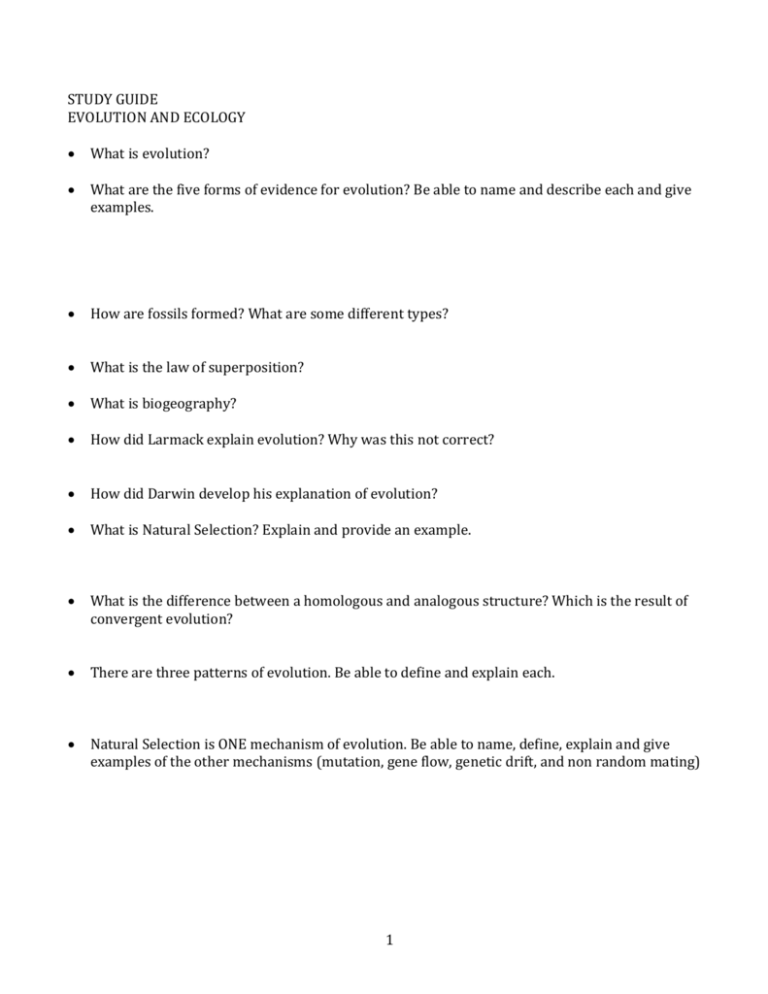
STUDY GUIDE EVOLUTION AND ECOLOGY What is evolution? What are the five forms of evidence for evolution? Be able to name and describe each and give examples. How are fossils formed? What are some different types? What is the law of superposition? What is biogeography? How did Larmack explain evolution? Why was this not correct? How did Darwin develop his explanation of evolution? What is Natural Selection? Explain and provide an example. What is the difference between a homologous and analogous structure? Which is the result of convergent evolution? There are three patterns of evolution. Be able to define and explain each. Natural Selection is ONE mechanism of evolution. Be able to name, define, explain and give examples of the other mechanisms (mutation, gene flow, genetic drift, and non random mating) 1 What are the three types of natural selection? Be able to recognize the patterns on a graph and explains what happens in each. What is a species? What are two ways species are formed? What is the difference between gradualism and punctuated equilibrium? Who do we associate with taxonomy? What is taxonomy? What are the levels of taxonomic classification? Know in order from most to least inclusive and least to most inclusive. What is binomial nomenclature? What is our species name in binomial nomenclature? What are the six kingdoms? Be able to provide cell type, number of cells and nutrition for each. What is the three-domain system? What evidence do we have for this system? What does it say about bacteria? ECOLOGY What is ecology? Why is it important to study ecology? What are the levels of organization from organism to biosphere? Define and give examples of each. What are biotic and abiotic factors? What is a niche and how does it differ from a habitat? What is the difference between a fundamental and realized niche? 2 What is a population? Be able to explain the three properties of populations (population size, population density and dispersion) Be able to explain and give examples for the three types of dispersion. Understand how birth rates + immigration will increase a population and death rate and emigration will decrease a population. What is an age structure? Why is America’s different from some areas in Southeast Asia? What is the difference between the three types of survivorship curves? Compare and contrast the logistic and exponential model of growth in a population. Compare and contrast density dependent and density independent factors. What is a community? Be able to name, describe and give examples for the five types of species interactions (predation, competition, parasitism, mutualism and commensalism) What is the difference between predation and parasitism? What are some traits that predators and prey have developed through natural selection? What is the significance of mimicry? What is the difference between species richness and species diversity? 3 What is succession? What is the difference between primary and secondary succession? What is an ecosystem? Energy flows through an ecosystem. What does this mean? What are producers? How are they related to productivity of an ecosystem? Why is only some energy used as biomass and available for the next trophic level? What are consumers? What are the different types of consumers? What are the different trophic levels? Who is on each level? Why are there usually only 4 or so levels? What is the difference between a food chain and a food web? Be able to read and interpret. How much energy is transferred between trophic levels? Why? Be able to summarize the water cycle, carbon cycle and nitrogen cycle. Be familiar with the seven terrestrial biomes. 4



